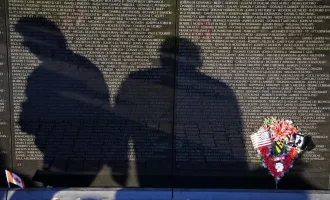
Increase Funding to Strategic National Stockpile
In the days since the arrival of COVID-19 to the United States we have seen the ineptitude of the federal government in responding to a pandemic.
The blame cannot fall on a single person or entity, because this has been a large-scale issue manifesting itself for quite some time. One of the issues I have found particularly unsettling is shortages in person protective equipment (PPE).
When disasters strike it is often the years of preparation, or lack thereof, leading up to disasters which determine how catastrophic the fallout is from the disasters.
Currently, we are witnessing an inadequate degree of preparedness in responding to a global pandemic that is evident in the shortage of PPE available to frontline providers.
The United States healthcare system suffered a similar, albeit smaller-scale, shock when there was an IV bag shortage following Hurricane Maria in late 2017.
This caused hospitals, legislators, and other stakeholders to conduct a gap analysis about how these problems could be prevented in the future, as IV fluid shortages directly affect patient care.
The gap analysis in regards to IV fluid shortages is still a work in progress, but there are certain similarities that suggest a gap analysis is also needed for PPE.
To place the federal funding for PPE in perspective, the US Strategic Petroleum Reserve (SPR) holds over $43 billion in emergency petroleum reserves in the event the country suffers a severe shortage of petroleum.
This emergency petroleum reserve was only created after the oil embargo in the 1970s caused a shortage in the petroleum supply. The SPR functions properly because it is continuously being revised and given additional funding.
A similar strategic reserve, the Strategic National Stockpile, is in place in the United States, but is not funded or managed nearly to the same degree.
The entire value of supplies in the Strategic National Stockpile is between $7 - 8 billion. The stockpile contributed a significant amount of PPE during the H1N1 pandemic in 2009 when approximately 100 million units of PPE were used from the stockpile.
The PPE used during the H1N1 pandemic was never replenished and when the COVID-19 pandemic began to affect the United States it is estimated that there were 12 million N95 masks and 30 million surgical masks in the stockpile.
The federal government estimated that around 3.5 billion units of N95 masks would be needed by healthcare workers, well over the amount the stockpile can contribute.
Hospitals around the country are now bearing the repercussions of failing to adequately replenish the stockpile.
Many states have requested orders from the stockpile and received only a small percentage of their requests. This has led to individual hospitals organizing their own PPE drives to attempt to gather PPE from the community.
UCSF medical students recently organized a PPE drive and collected over 14,500 units of PPE in 3 days.
This is a significant achievement, but only a fraction of the total need by the healthcare system.
PPE shortages are one of the first indicators of shortages in the stockpile. One of the other indicators will be ventilators.
There are about 13,000 ventilators in the stockpile with an estimated 160,000 ventilators in circulation at hospitals today.
Estimates show a need of up to 320,000 ventilators at the peak of the pandemic.
The stockpile was created to supplement hospitals in times of crisis and it is clear that the stockpile was not adequately supplied to appropriately support hospitals around the country.
The warnings about shortages in the Strategic National Stockpile are not new.
The United States has conducted various simulations since 2009, and the most recent, “Crimson Contagion” in 2019, highlighted the need for additional supplies in the stockpile.
Hopefully, the COVID-19 pandemic will serve as a similar catalyst as the oil embargo of the 1970s in spurring further gap analyses to create funding to be adequately prepared for the next pandemic.
In the increasingly globalized world humans inhabit, the question is not if the next pandemic will happen, but instead when it will happen.
When that time comes the United States federal government needs to be more prepared to support its citizens.
We should not be in a position where the CDC tells our frontline health care workers to be prepared to use bandanas as last resort PPE. We need to take action.



